Deforestation and Monarch Conservation
21 March 2008 | Author: Jim LovettThe rapid degradation of monarch habitats in both Mexico and the United States is now too compelling to ignore. We must act.
DEFORESTATION AND MONARCH CONSERVATION
Chip Taylor (Monarch Watch)
13 March 2008
Earlier this month, Lincoln Brower, Dan Slayback, Robert Simmon, and Isabel Ramirez published NASA photos showing deforestation within the Monarch Butterfly Biosphere Reserve in Mexico. At the time of publication, we (Monarch Watch) were in Mexico buying recovered tags as part of our program to assess the dynamics of the monarch migration. We visited four monarch colonies and witnessed first-hand the impact of deforestation. The rapid degradation of monarch habitats in both Mexico and the United States is now too compelling to ignore. We must act. In this communication, I’ll summarize my views on the effects of habitat loss in Mexico and the United States and will reflect on what needs to be done to conserve the monarch migration.
Impact of Deforestation on Monarchs
Deforestation is already contributing to the mortality of overwintering monarchs. In the winter of 2006-2007 a small monarch colony formed at a site known locally as Aseradero on the northwest aspect of Cerro Pelon, one of the most deforested areas in the region. The trees at this location were relatively small (4-10 meters) and offered little protection from winds and cold weather. A large proportion of the monarchs died at this site when the temperature dropped below freezing in January 2007. No surviving monarchs were present when we visited this location in March 2007 (see “New Tree Nursery Near Cerro Pelon”).
The degradation of the forest surrounding the Aseradero colony can be seen in satellite photos of the area (see monarchwatch.org/mx/aseradero.jpg).
This year at Cerro Pelon, the El Capulin colony formed in a relatively degraded forest near the top of a ridge. Monarch colonies typically move during the winter and tend to progress down southwesterly-facing slopes. In this case, the monarchs moved progressively down-slope to the northwest across a badly degraded area and settled in the Las Canoas arroyo where we saw them on the 6th of March. There is one large tree in the arroyo and it was covered with monarchs (see monarchwatch.org/mx/capulin.jpg and monarchwatch.org/mx/capulin-tree.jpg). The surrounding trees were also covered with monarchs but there was little in the way of canopy to protect the butterflies from freezing temperatures. I was shocked to see how exposed this colony was at this time but now realize that it has been exposed through most of the winter, resulting in the death of millions of monarchs. Typically, 10-20% of the monarchs at each colony die of various causes during the winter, though rainfall followed by freezing temperatures can be devastating as it was in January of 2002 and January and February of 2004. Excessive mortality due to exposure throughout the winter is not the norm for monarch colonies. Evidence of greater mortality for the El Capulin colony this year comes from eyewitness accounts and is also reflected in the number of tag recoveries. In years without catastrophic mortality due to winter storms, we recover an average of twenty-two tags from the residents of communities on Cerro Pelon. The tags are usually found on dead butterflies beneath the clusters and the numbers recovered from most of the colonies appear to be proportional to the overwintering mortality. Ninety-two tags were recovered at Cerro Pelon this season – more than four times the typical rate of recovery.
Deforestation
The rate of deforestation in the Monarch Biosphere Reserve exceeds the rate of natural forest replacement and the current efforts at reforestation. It is simply not sustainable and must be reduced. Estimates of the rate of deforestation vary depending on the time period, the authorities involved, and perhaps the methodologies used to make the estimates. Nevertheless, it is clear that the average annual rate of deforestation (2-5%) is devastating the monarch overwintering habitat and destroying the forests that sustain the water supplies supporting the people in the region. Nearly all of the old growth forests with >200 year-old oyamel fir trees are gone from the monarch reserve and for decades monarchs have overwintered in areas with trees ranging from 40 to 80 years of age. In the last two years, possibly due to the lack of more mature forests, monarchs have attempted to overwinter at three sites at which most of the trees were less than 15 years old. Such forests do not protect the monarchs from periodic freezes and monarch mortality is known to have been high at two of these sites.
Illegal logging persists in spite of President Calderon’s attempts to crack down on these activities (see “Crackdown on Illegal Logging in Mexico”) and it seems certain to continue. Local residents at Cerro Pelon told me that 2-3 loaded logging trucks leave the core zone on that mountain each night – with the knowledge of local officials. In their view, the only way to control illegal logging is to station rotating units of the Mexican army in areas where illegal logging is extensive. Stopping illegal logging may be impossible, but reducing these activities to manageable levels through enforcement and incentives is needed to slow the rate of degradation of these forests.
Reforestation
At current levels of planting, reforestation can’t keep pace with deforestation. Close to half of the 56,259-hectare Monarch Biosphere Reserve is degraded and in need of some degree of reforestation. Two reforestation efforts are underway, one by World Wildlife Fund Mexico (WWFMX), in collaboration with the Mexican government, and the other by the Michoacan Reforestation Fund (MRF). The former has planted more than 2.1 million fir, pine, and cedar trees (mostly in the core of the reserve) over the last 4 years. MRF, using contributions from individuals and grants from American Forests, National Fish and Wildlife Foundation, and United States Fish and Wildlife Service has worked with the La Cruz Habitat Protection Project in Mexico to plant more than 2.7 million fir and pine trees (mostly in the buffer zone and areas adjacent to the reserve) over the last 10 years. Although both of these programs are striving to reforest the monarch reserve, more trees need to be planted just to keep pace with the rate of deforestation. Frankly, reforestation efforts need to increase 2-3 fold in the next few years so that areas progressively degraded over the life of the reserve can be replanted. A promising development is the creation of a new tree nursery with the capacity of 800,000 seedlings per year at San Juan Xoconusco by WWFMX and Mexican government agencies (see “New Tree Nursery Near Cerro Pelon”). Four additional nurseries are in the planning stages, each with an annual capacity of 50,000 seedlings. MRF is increasing its capacity as well but more money is needed by both of these programs to assure that more seedlings are propagated, planted, and well tended.
The ease of reforestation depends greatly on the type of landscape being planted. Areas that have been selectively logged and contain mature trees reseed and therefore require little planting. Landscapes that were formerly crop lands are easily reforested as secondary growth is readily controlled. Clear-cut areas, which are rapidly invaded by dense 3-4 meter tall weedy vegetation, are particularly challenging to reforest since this vegetation competes for light, space, and nutrients and chokes out the newly planted trees. The north side of Cerro Pelon has been nearly clear-cut and the growth and survival of seedlings planted in the cut over areas appears to be quite low (see monarchwatch.org/mx/pelon.jpg). Reestablishing the forest on this slope will involve many replantings, take a long time, and cost a great deal.
Habitat Loss in United States
Habitat loss in the United States is also a threat to the monarch population. Development consumes 6,000 acres (9.4 square miles) a day, 2.2 million acres per year – this is roughly equivalent to losing an area of habitat the size of the state of Illinois (the 24th largest U.S. state) every sixteen years. In addition, the adoption of Roundup® Ready soybeans and corn has reduced monarch habitat by at least 100 million acres since 1996 (see “Roundup Ready Crops and Resistant Weeds”). Further, the incentives to produce biofuels over the last three years is leading growers to convert monarch habitat in the form of marginal lands and Conservation Reserve Program (CRP) acreage to cornfields. In an attempt to compensate for these losses, Monarch Watch initiated the Monarch Waystation program in 2005. The goals of this program are to create, conserve, and protect monarch habitats and to educate the public about the need to do more to preserve wildlife. To date, 1,900 Monarch Waystations have been certified and registered, but this is not enough. We need to create and protect more habitat for monarchs and other species. It is easy for me to envision the monarch migration as already being on a long slow death spiral – I have worked with monarchs for the last sixteen years and witnessed habitat degradation in both the United States and Mexico. Indeed, the population may be declining already (see “Overwintering Monarch Population 2007-2008”). What a shame it would be to lose this magnificent natural phenomenon – a sad indictment of the quality of human stewardship. This need not happen; all of the problems associated with monarch conservation can be solved. We need the will, cooperation, and dollars (and pesos) to make it happen.
The Solutions
A Mexican colleague wisely pointed out that the monarchs will not be saved unless a way is found to make the living trees more valuable than those that are cut for lumber. This statement makes sense but how can the “collective we” (i.e., all of those interested in monarch conservation including WWFMX and the Mexican government) convince the members of the ninety-one ejidos and indigenous communities in the monarch reserve that it is in their best interests to protect the forests? A possible solution is a system of incentives. To make the living trees more valuable may require paying the local residents to plant, thin, and otherwise maintain the forests rather than paying them not to cut the trees. A system of incentives involving fair compensation for forest management, rather than one of prohibitions, is badly needed. Incentives available to all communities are likely to be more successful than the present scheme in which some of the communities benefit from tourism while others do not receive this source of income. Some progress is being made in providing incentives through funds available from the Monarch Fund. This fund, which is administered by WWFMX, was established from a $5 million grant from the Packard Foundation with an addition of $1 million from the Mexican government and a total of $750,000 from the states of Michoacan and Mexico. The interest from this fund is used to pay cooperating communities. However, these funds (about $224,000/year) are not sufficient to engage the residents of all the communities within the Monarch Butterfly Biosphere Reserve in the level of stewardship required to sustain the forests. Fully funding the incentive program I envision will necessitate an increase in the Monarch Fund’s endowment from the $6.75 million at present to at least $25 million. Endowments are used to sustain many worthwhile programs and could be used effectively to conserve monarchs as well. This incentive program is not the only solution. Complimentary programs such as Alternare are needed to train local residents so they can more efficiently farm their lands and develop alternative sources of income.
Monarchs as a Metaphor for Conservation
Monarch conservation involves international and local politics, inadequate international cooperation, insufficient funding, habitat loss due to legally sanctioned development and illegal exploitation, a group of passionate advocates, and a largely uninformed and indifferent public. Efforts are underway to improve international cooperation but progress is slow. Insufficient funding limits most conservation efforts and that is the case here. More funding is needed to support international cooperation, reforestation, and protection of the existing forest resources.
Further, the planet is changing rapidly and monarchs are certain to be negatively affected by global warming and indirectly affected by increasing levels of carbon dioxide, nitrification, and the increasing unpredictability of rainfall (see “Changes in the Composition of Plant Communities”). To effectively protect the monarch migration, we will need to address numerous political, economic, and environmental issues.
Acknowledgements
Lincoln Brower, Carlos Galindo Leal, and Eduardo Rendon Salinas provided information used in this summary but all the opinions in the above are mine. Jim Lovett, Ann Ryan, and Janis Lentz reviewed the text and provided useful suggestions.
Orley R. “Chip” Taylor
Director, Monarch Watch
University of Kansas
Lawrence, KS 66045
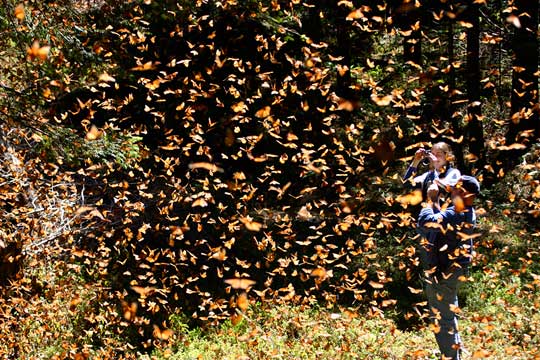

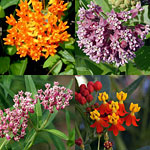

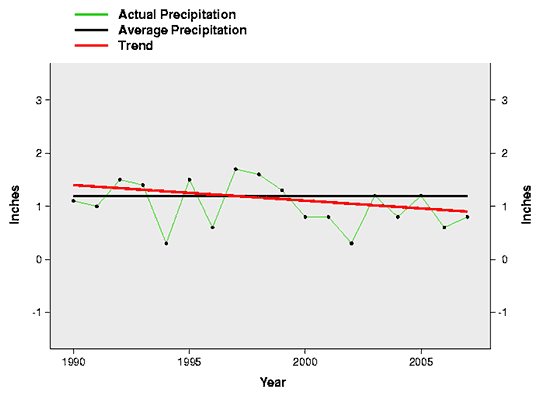
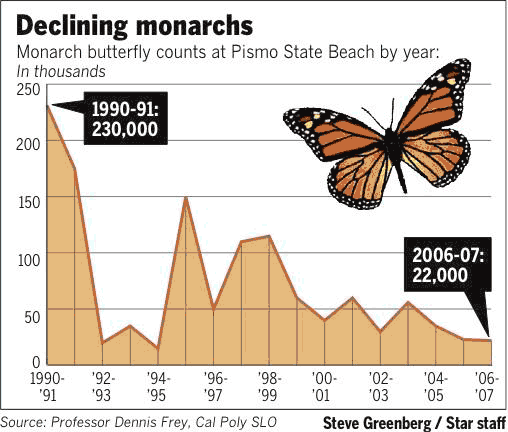
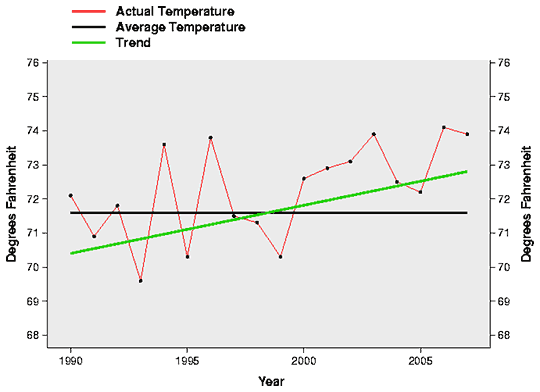
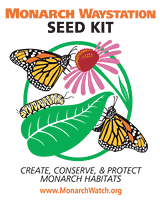 The Monarch Waystation Seed Kits for 2008 (item#125522) are now available via the Monarch Watch Shop (
The Monarch Waystation Seed Kits for 2008 (item#125522) are now available via the Monarch Watch Shop (
